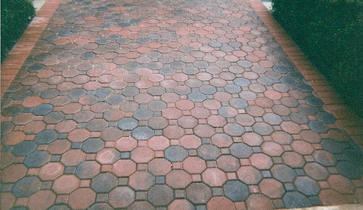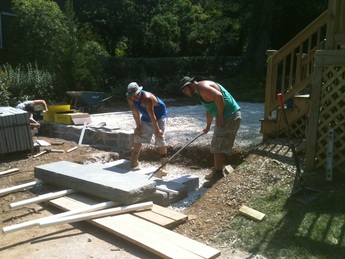
Not that I’m not already somewhat tuned in as to what people are looking for in their yards, but I figured it was a good opportunity to see what’s being pushed for the coming year. So I clicked over to see what is being pushed.
The article highlighted a couple popular themes and design concepts – romanticism, interplanting, low maintenance designs, and sustainability to name a few.
I greeted this news with a yawn.
Not because I’m against some of these ideas. Au contraire. Actually I’m quite on board with pushing sustainability. Interplanting adds constant interest in nearly every corner of a garden. And who doesn’t want that elusive “low maintenance” design.
No, my ambivalence towards embracing these “trends” has more to do with defining these principles as trends vs. basic keystone principles of good design.
Trends come and go. Think back to what some of the popular trends of the past have left us. Remember the octagonal paver stone design from just a few years back? 10 or 15 years ago it seemed nearly every paver stone job I installed was this popular trendy design. In fact the term “paver stone” was nearly synonymous with this pattern. As manufacturers began offering more and more options from which to choose, this shape slowly fell out of favor. In the last few years I’ve met with quite a few clients who now want to remove this “dated” design.
Exposed aggregate finishes in concrete. This was a popular trend a few years earlier. And one quite honestly that is still used on occasion today. But its also one that has led many homeowners to want to “update” their “70’s” feeling yards.
Wood inlays in concrete. Another popular “trend” that I’m sure many people felt looked sleek back in the day. But today the wood has rotted out, the slabs have heaved, and what’s left is the remnants of a once-popular trend.
Junipers as a front lawn. Hey I’m all for reducing lawn areas if possible, but if I had a nickel for every client who wanted to me to rip out those trash-collecting catch-alls … (Actually I probably do have at least a nickel for every juniper we’ve ripped out based on some of the buried treasure we’ve found tangled amongst the branches…)

Even design principles have changed over time. Think back to your grandmother’s house with the white picket fence around the yard, the rose beds up against the fence, and the uniform linear beds surrounding the perimeter of the house.
And my personal favorite is when a home is built on a relatively square, level lot, yet the “trendy” features are forced into the yard by building up mounds of imported soil.
That’s not to say that some of these “trends” don’t have their place.
I’ve actually seen some absolutely awesome yards that are going for a theme and make good use of lawn gnomes and plastic flamingoes.
Everyone has different taste. And everyone has different uses for their yards. And I’m a firm believer that every design should be custom tailored for the taste and lifestyle of the client.
But good design principles are timeless. Attempting to incorporate today’s trends into a design simply to be on board with what’s hot today is asking for a dated look in the not-so-distant future.
And certainly some of today’s “trends” aren’t necessarily bad ideas. Built-in outdoor kitchens, for example, probably aren’t going away any time soon.
But when planning an outdoor design, it’s important to focus on what’s really important, namely how YOU want to utilize your yard and what will work for your lifestyle. Don’t get hung up on what the current trends are, but rather what you want to live with for the foreseeable future.
Because today’s octagonal pavers and juniper yards are most likely tomorrow’s vinyl fencing and tumbled concrete block walls – relics from another era destined to be replaced.
Can you think of any other trends from bygone eras that effectively timestamp a yard?
For a few timeless design ideas, give us a call.








 RSS Feed
RSS Feed